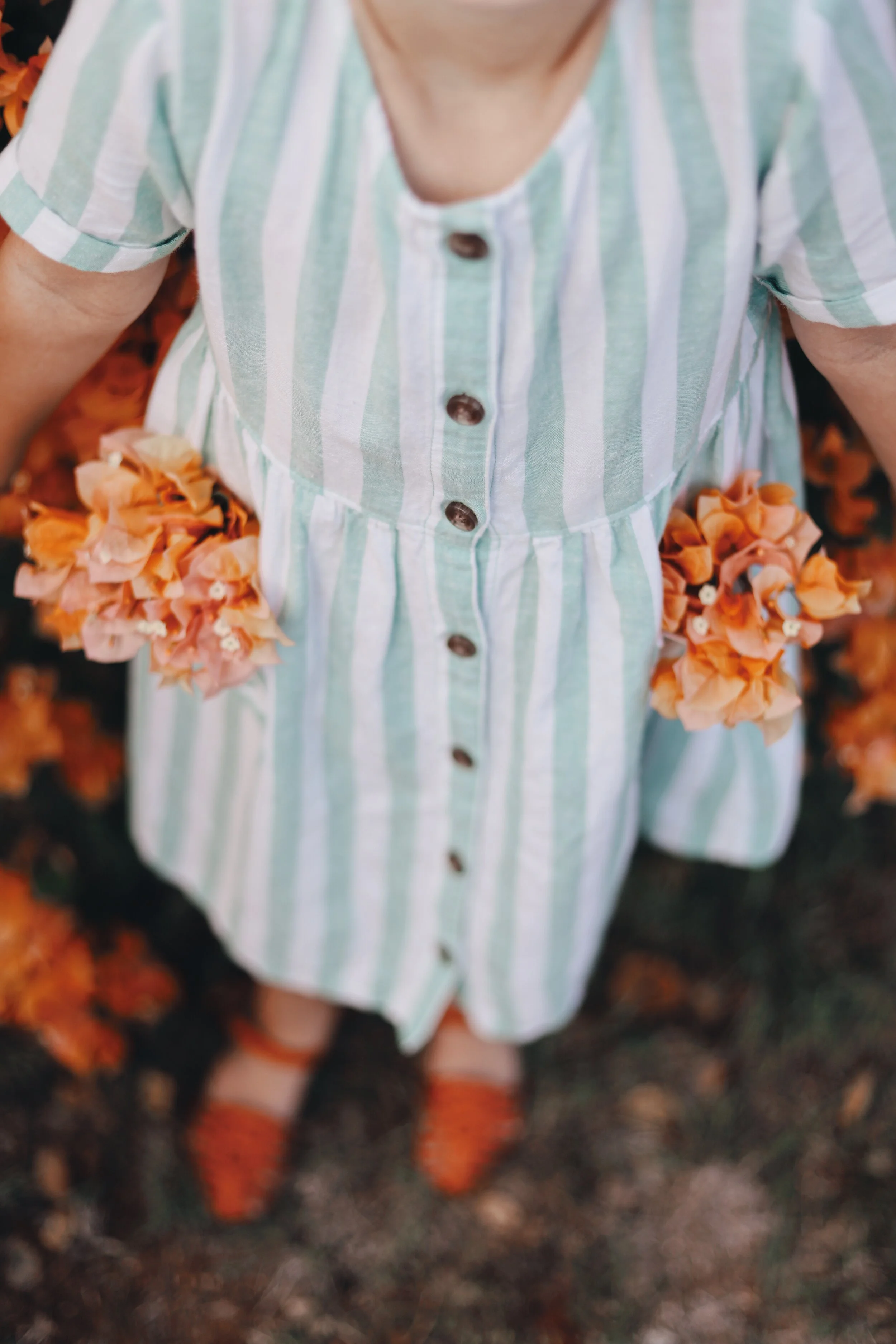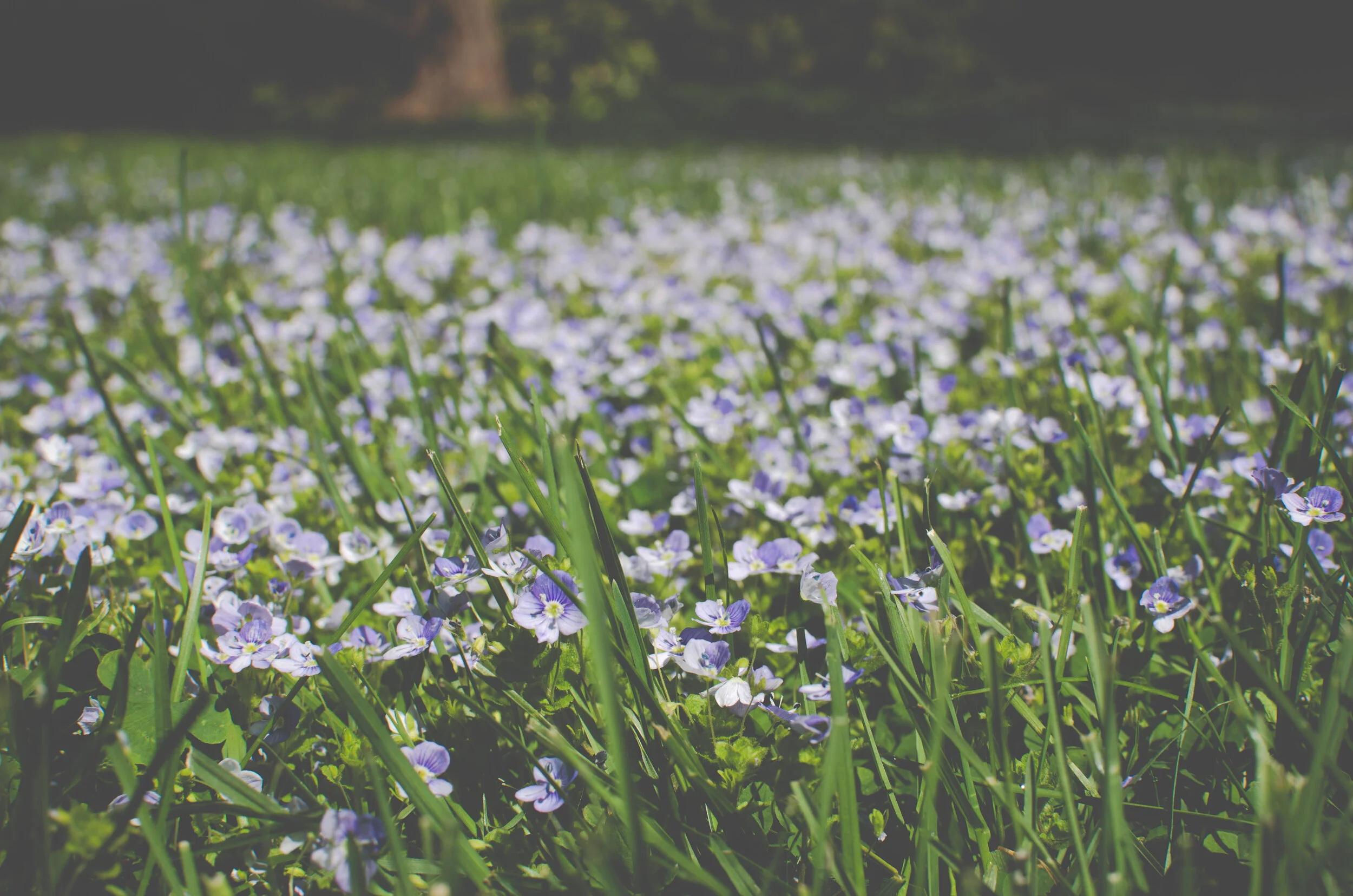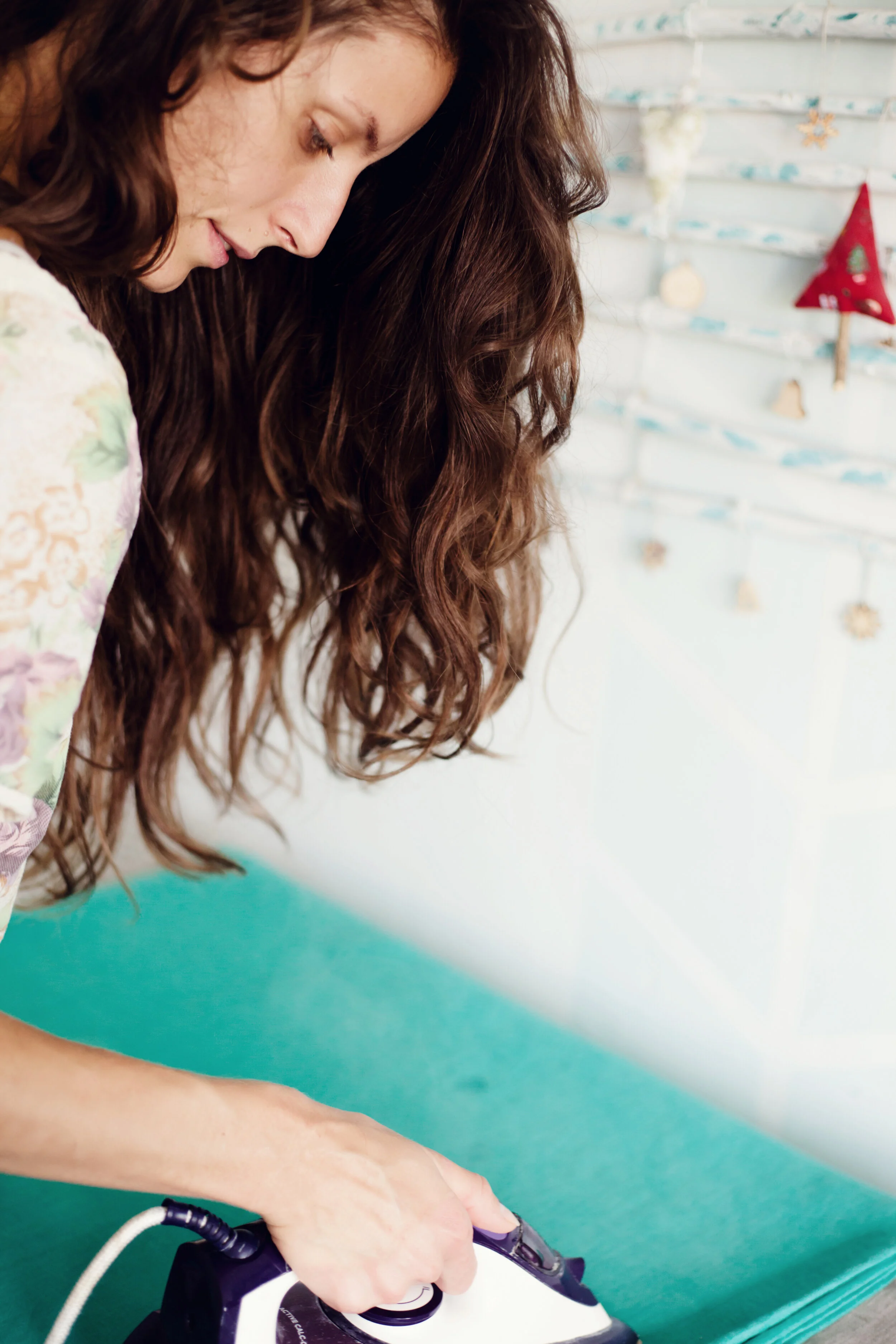Linen
Linen is a common fiber used for slow fashion. Photo by Amy Humphries @amyjoyhumphries
Linen is a very old fiber that also goes by another name, flax. Yup, the little seed that keeps you regular also makes a wonderful fabric. Well, actually the stem of that plant does. Since it is made from stems, it is referred to as a bast fiber. Another variety of flax is grown for its linseed oil which is used for fine art paint.
It has been used forever (in terms of human history) for clothing. Egyptians even used it for mummification. Ever wonder why the place you keep your towels is called the “linen closet”? Towels and bedding used to be made of linen.
To create fabric from flax is a more labor-intensive process than cotton. That process makes linen more expensive.
Why Linen?
It has a great luster and a smooth feeling that is comfy for everyday wear. It also a very strong fiber. It is known for its natural ability to absorb and wick moisture which means it dries fast and allows air to get to the skin. Right now, there are people in science labs trying to create fibers that do this very thing, but linen has done this for tens of thousands of years. This is a great fiber for clothing in humid climates and for dish towels.
How Do I Know It’s Linen?
Linen tends to have slubs because the fibers are organically shaped bundles of cells. Slubs give linen its uneven appearance. Linen wrinkles like crazy, so don’t expect to be perfectly pressed when you wear it. Just embrace its natural look. Linen is sometimes blended with spandex to prevent some wrinkling.
Flax field. Photo by Khürt Williams
Where Does Linen Come From?
This ancient plant grows in temperate climates like northwestern Europe. France, Belgium, the Netherlands, and Ireland all produce a higher quality fiber. Eastern Europe, New Zealand and Australia produce a coarser variety of flax.
Dyeing at home
Linen is easy to dye. Rit dye and other DIY dyes sold for home use are effective on this cellulose fiber. Fiber-reactive dyes are the other kids of dyes used for linen. Like other natural plant fibers, linen dyes well with natural dyes from plants and food waste.
Linen Care & Storage
Linen has fairly easy care. It is washed easily in a washing machine. Just make sure not to overuse chlorine bleach because it will eat away at it.
Take care with ironing linen. Photo by Volha Flaxeco
Ironing
Linen wrinkles. That’s a fact. You are going to want to iron it. The best way to do this to evenly damp your garment or linen tablecloth. Using a dry iron on the hottest setting, iron until completely dry. Sometimes darker colors tend to shine after ironing. To avoid this polishing from ruining the look of your garment, turn the garment inside out to iron on the wrong side.
Storage
Try to avoid folding linen garments for long term storage because it will crack along the folds. Try hanging it up
Mildew
This musty smelling fungus grows on damp linen. It can leave stains and rot away the material over time.
Pests
Like other cellulose fibers, carb-loving silverfish and firebrats eat linen. Store clothing that is not worn regularly in a dry, airtight lidded container or a cedar chest. These pests hate cedar, bay leaves, cinnamon, and cloves. Sachets with these natural materials will keep pests away while making your clothes smell wonderful.
Light
Over time, sunlight fades and yellows linen fabrics. This probably isn’t an issue for clothing but consider that when buying drapes, tablecloths, and bedding. Just be aware that it won’t last forever.
Drying
Drip drying or hang dry is best, most energy-efficient a.k.a. climate-friendly way to dry your linen pieces. You can dry it in a tumble dryer but beware that your clothes won’t last as long this way.






